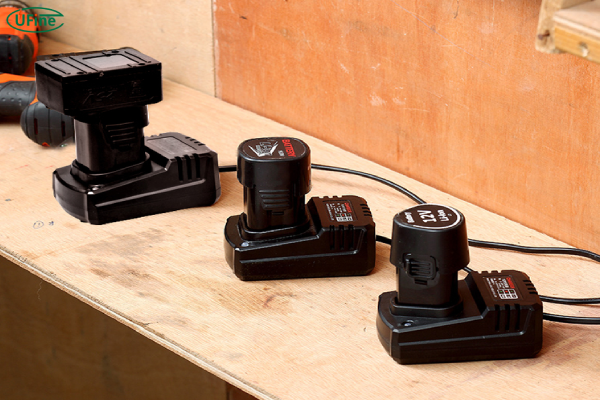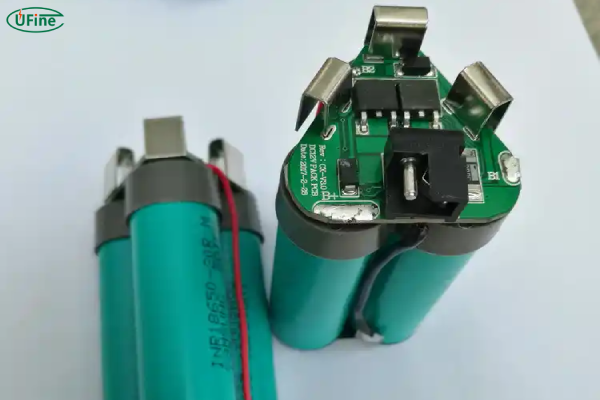If you’re someone who relies on a drill for daily tasks, whether for home improvement, professional projects, or DIY hobbies, you know how important it is to keep your drill battery in top shape. A high-performing drill battery can save you time, money, and frustration, but over time, even the best batteries can lose their capacity if not cared for properly. In this article, we’ll explore 10 essential tips for maximizing the life of your drill battery, helping you extend its longevity and get the most out of your investment.
Upgrade Your Drill Battery to Lithium Batteries

1. Store your drill battery in a cool, dry place
Believe it or not, the way you store your drill battery plays a crucial role in how long it lasts. High temperatures can significantly reduce the lifespan of your battery by causing the internal components to degrade faster. For instance, when a battery is exposed to excessive heat, it can cause the electrolyte inside the battery to evaporate, leading to poor performance.
Tip: Always store your drill battery in a cool, dry location—ideally, between 40°F and 80°F (4°C to 27°C). Avoid leaving it in direct sunlight, near heat sources, or in damp areas like a garage. Storing it at room temperature is the best way to ensure that your battery remains in good working condition for a long time.
2. Avoid complete discharge
While many modern drill batteries, especially lithium-ion ones, don’t suffer from the “memory effect” like older nickel-cadmium batteries, it’s still a good idea to avoid fully discharging the battery on a regular basis. A deep discharge (where the battery reaches 0%) can put unnecessary strain on the battery and reduce its overall lifespan.
Tip: Try to recharge your drill battery when it reaches around 20-30% capacity rather than letting it completely die. This simple habit can significantly prolong its life.
3. Keep your battery clean and dry
Dust, dirt, and moisture can cause serious damage to the delicate internal components of your drill battery. A dirty battery can result in poor connections, reduced power output, or even short-circuiting. To ensure that your drill battery is always in peak condition, it’s important to regularly clean the terminals and the outer casing.
Tip: Use a soft cloth or a dry, soft-bristled brush to gently wipe away dust and debris. Be careful not to let moisture come into contact with the battery terminals, as this can lead to corrosion. If your battery gets wet, make sure to dry it thoroughly before recharging or using it again.
4. Charge the battery correctly
How you charge your drill battery can make a significant difference in how long it lasts. Overcharging or undercharging can reduce the efficiency of the battery and shorten its lifespan. Many newer drill batteries, especially lithium-ion types, are designed to prevent overcharging. However, some older models or cheaper chargers may not have this feature, so it’s essential to be cautious.
Tip: Always use the charger that came with your drill or an approved replacement. Make sure the charger is specifically designed for your battery type (e.g., lithium-ion, NiCd, etc.). Avoid leaving your battery plugged in for extended periods after it’s fully charged.
5. Avoid extreme temperatures during use
Using your drill in extreme heat or cold can put extra stress on your drill battery, which can lead to overheating or underperformance. Just like with storage, exposure to extreme temperatures during use can shorten the battery’s lifespan.
Tip: If you’re working in very hot or cold conditions, take short breaks to give the battery a chance to cool down. If you’re using your drill outside in the winter or summer, try to work in moderation and avoid extended usage. If possible, keep your drill battery in a temperature-controlled environment.
6. Use your drill regularly
Believe it or not, using your drill battery regularly is one of the best ways to maintain its health. Like most things, a battery benefits from consistent use. If a battery sits idle for too long, it can lose charge or develop issues such as a decrease in total capacity.
Tip: Even if you don’t need to use your drill, make sure to run it for a few minutes every couple of weeks. This helps keep the battery active and prevents it from losing its charge too quickly when you need it most.
7. Avoid overheating the battery
Overheating is one of the most common ways to shorten the life of a drill battery. This can happen when you’re working for extended periods, using your drill in high-demand tasks, or pushing your tool beyond its limits.
Tip: If your battery feels warm or hot to the touch, stop using the drill and allow it to cool down before continuing. A few minutes of rest can make a huge difference in the longevity of your drill battery.
8. Invest in a high-quality battery and charger
When it comes to drill batteries, the old adage “you get what you pay for” certainly holds true. While off-brand or inexpensive batteries and chargers might seem like a good deal upfront, they often lack the performance and longevity of high-quality products. Cheaper alternatives might not have the advanced features that protect against overcharging, overheating, or over-discharge.
Tip: Opt for high-quality drill batteries and chargers from reputable brands. These batteries are typically designed with longer lifespans, better charging systems, and more advanced protection features. Additionally, investing in an original charger helps ensure proper charging, reducing the risk of damage.
9. Rotate your batteries (If you have more than one)
If you’re using multiple drill batteries, it’s essential to rotate them regularly. Using the same battery for all your tasks can cause it to wear down faster than the others. When you rotate your batteries, you distribute the wear and tear evenly, allowing each battery to rest and recharge fully.
Tip: If you have two or more drill batteries, make it a habit to switch between them frequently. This practice not only helps extend the lifespan of each battery, but it also ensures you always have a charged battery ready to go when you need it.
10. Replace your battery when needed
Even with the best care, all batteries eventually lose their ability to hold a full charge. When this happens, your drill battery will begin to drain quickly and may not provide enough power to complete tasks efficiently.
Tip: If you notice that your drill battery isn’t holding a charge as long as it used to, or if it starts losing power faster than usual, it might be time to replace it. Most drill batteries last for around 2-3 years, but it depends on usage and care. Keep an eye on its performance, and don’t hesitate to replace it when needed.
Conclusion: taking care of your drill battery pays off
Maximizing the life of your drill battery isn’t just about saving money on replacements—it’s also about ensuring that your tools are always ready when you need them. By following these 10 tips—storing your battery properly, avoiding deep discharges, keeping it clean, charging correctly, and taking care of it during use—you can extend its lifespan and keep your drill working like new.
With the right care, a good-quality drill battery can serve you well for years. Whether you’re a weekend warrior tackling home improvement projects or a professional in need of reliable tools, following these tips will help you get the most out of your drill battery. And as a result, you’ll never have to worry about your drill losing power mid-task again.
Pro Tip: Keep an eye on your drill battery’s health by noting how long it holds a charge. Over time, small declines in performance are normal, but if you’re noticing significant issues, consider getting a new battery to keep your drill in optimal working condition.
This article is packed with practical tips that can make a big difference in the longevity of your drill battery. By following these straightforward guidelines, you’ll not only extend the life of your battery but also keep your tools performing at their best.
Related Tags:
More Articles

How to Choose the Best Floor Scrubber Battery for Commercial Cleaning?
Selecting the ideal floor scrubber battery ensures a long runtime, rapid charging, and minimal maintenance for efficient commercial cleaning operations.
Battery for Blower vs Battery for Leaf Vacuum: Which One Should You Choose?
Battery for blower vs leaf vacuum—learn the key differences in power, fit, and runtime to choose the right battery for your outdoor tool needs.
How to Choose the Right Battery for Blower?
Choosing the right blower battery? Consider voltage, capacity, chemistry & usage. This guide helps match the best battery for peak performance.
How to Choose the Best Insulated Battery Box for Lithium Batteries?
Choosing the Best Insulated Battery Box for Lithium Batteries? Discover key factors such as size, material, and safety for optimal protection and performance.
7 Critical Elements on a Lithium Battery Shipping Label
What must be on a lithium battery shipping label? Learn 7 key elements to ensure safety, legal compliance, and correct handling across all transport modes.




